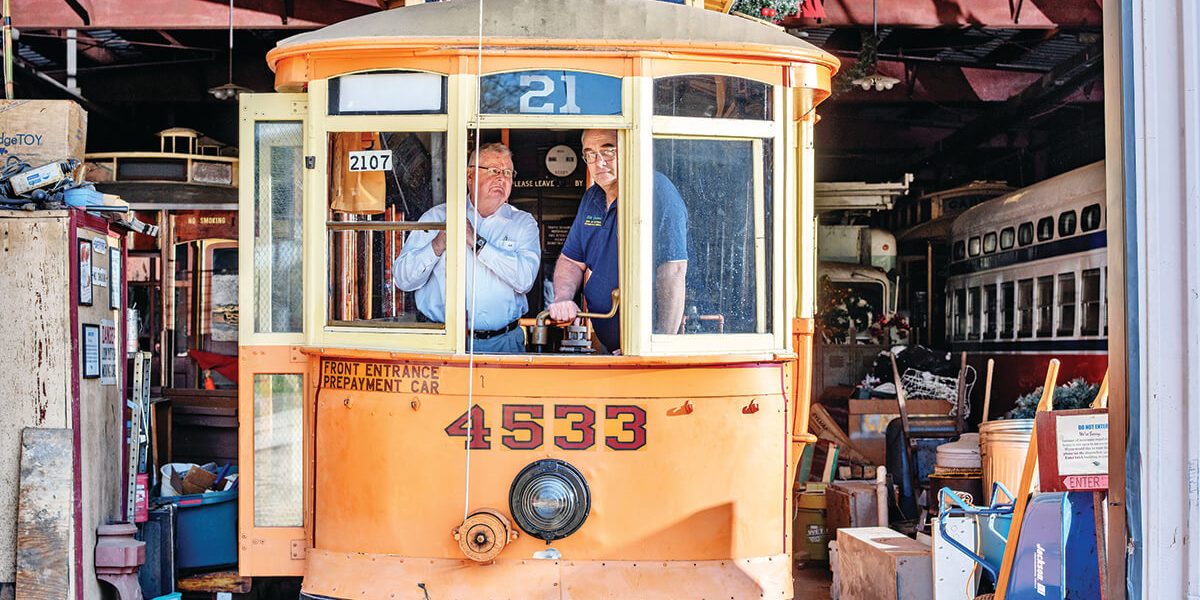History & Politics
Back on Track
The Baltimore Streetcar Museum rebuilds from an ironic accident.
“Hello sir, how can I help you?” the man dressed like a conductor asks from just inside the front door of the Baltimore Streetcar Museum. He’s John La Costa, a 69-year-old, semi-retired electrical and systems engineer.
Since the mid-1970s, he and small group of volunteers have spent much of their free time here, keeping alive the history of Baltimoreans’ primary form of public transportation during the late 1800s and early 1900s.
Normally, La Costa would talk to visitors while riding aboard one of the museum’s dozen or so authentically restored vintage passenger vehicles. But today, he’s relegated to providing a tour of a few parked train cars inside a covered three-track wide garage as a result of a terribly ironic accident in March.
La Costa, the museum’s vice president of engineering, was on vacation in Germany when he received an email with the news that an empty, modern CSX freight train derailed from the curved line of working rail that spans the museum’s plot of land at 1911 Falls Road. A train car slowly crushed the electrical substation that powers the museum’s historic cars and destroyed more than 500 feet of suspended overhead wire that carries the 600-volt charge to run them.
“It was a great start to that part of the vacation,” La Costa says with a laugh. “I would have liked to be here to try to help.” It could have been worse—no one was injured and the streetcars were spared damage—but the necessary infrastructure repairs meant the museum’s main attraction, the running of those living time capsules, would be closed until further notice and resume only after thousands of dollars in repairs.
Thankfully, CSX offered to pay the bill, and the museum’s visitor center reopened soon after the accident. The museum is planning a grand reopening as soon as its track is operational, but “that still doesn’t help the whole feeling that it was destroyed,” says Ed Amrhein, the museum’s administrative vice president.
“Most of the people at the museum itself have taken it pretty hard,” he says. “We volunteered a long time to build a lot of this stuff, and to watch it disappear in a couple hours was heartbreaking.”
